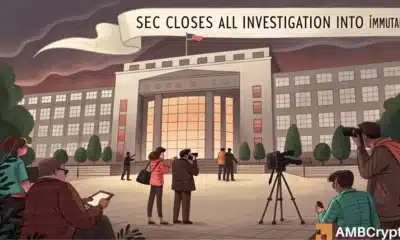As OP wavers, can ARB, zkSync, or STRK step up to the plate? Analyzing…

-Optimism got overtaken by the zkSync protocol in terms of gas usage.
– Interest in NFTs declined as daily active users fell.
Optimism [OP] has been a prominent protocol in the L2 (Layer 2) market, but its dominance is being challenged due to the recent AirDrop of Arbitrum [ARB] and the increasing interest in protocols like zkSync and Starknet [STRK].
Is your portfolio green? Check out the Optimism Profit Calculator
Foot on the “gas”
The decline in Optimism’s dominance was indicated by the fact that zkSync had overtaken Optimism in terms of gas usage over the last month, according to Artemis’ data. Starkent was close behind and was slowly catching up to Optimism as time passed.
Here are the Top 5 L2s, ranked by gas consumption in the last month ⛽:
1. @arbitrum
2. @zksync Lite
3. @optimismFND
4. @Starknet
5. @0xPolygon pic.twitter.com/fg8UF3F7kW— Artemis ? (@Artemis__xyz) April 13, 2023
The decline in gas usage could be attributed to the falling number of daily active addresses on the Optimism network. Over the last few days, the number of daily active addresses on Optimism has fallen from 90,000 to 70,000.
Despite the threat to its dominance, Optimism may still revive interest in its protocol.
Token Terminal’s data shows an increase in the number of active developers on the network and a surge in code commits on Optimism’s GitHub. This suggests that Optimism may be working on new upgrades and updates to enhance its protocol, which could potentially attract more users.
The decline in NFT trades on the Optimism protocol could negatively impact its overall adoption and usage, as NFTs have become a significant use case for layer 2 technology. If the trend continues, it may lead to a further decrease in interest and adoption of the Optimism protocol.
Realistic or not, here’s OP’s market cap in BTC’s terms
Holders maintain Optimism
Despite the challenges faced by the Optimism protocol, its native token, OP, continued to perform well. Santiment’s data showed that the price of OP continued to rise, and there was an increase in the number of transactions made using the token.
As a result, the volume of OP grew significantly from 82 million to 243 million. This suggested that, at press time, investors and users had confidence in OP despite the challenges faced by the protocol.










